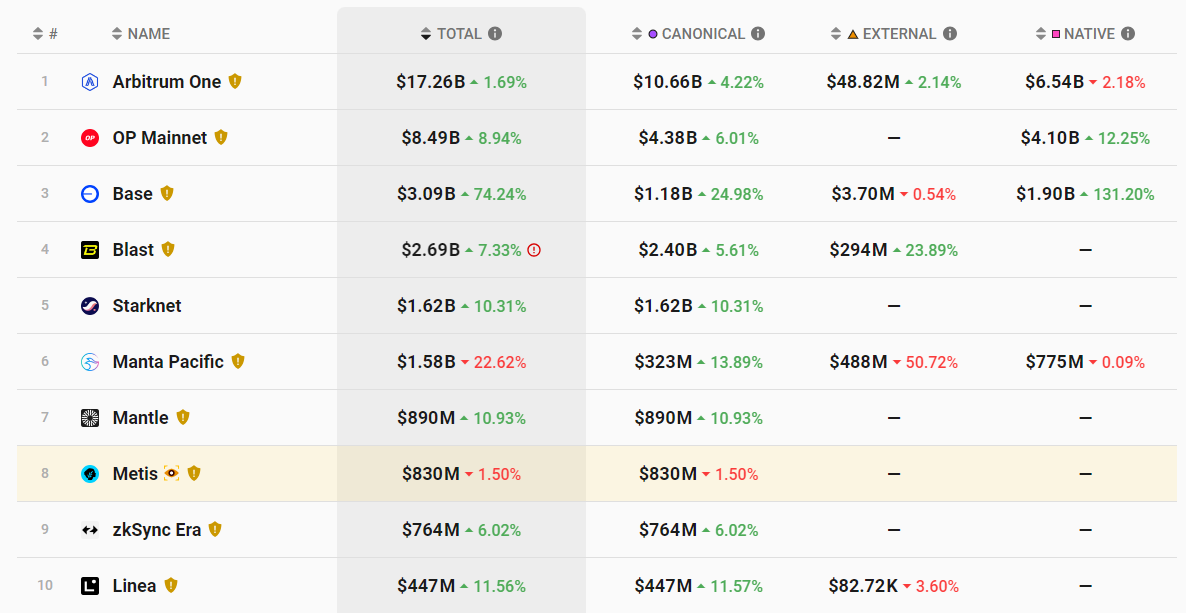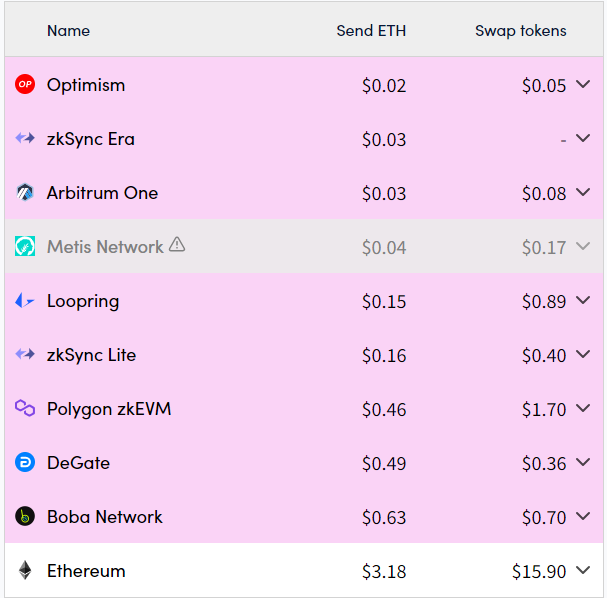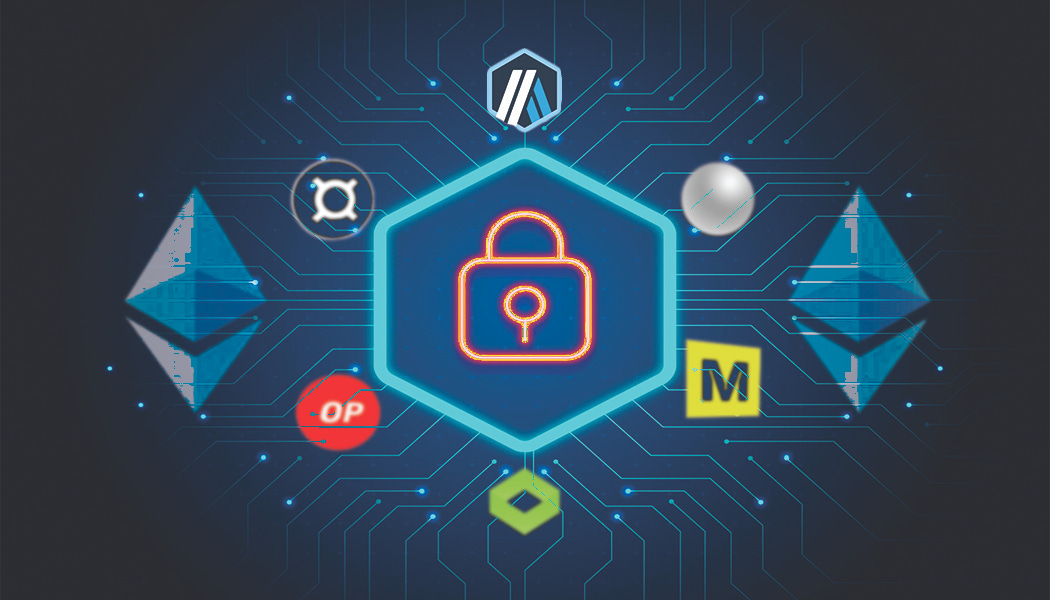Ethereum's Layer 2 – Post Dencun | Layer 2 Review
Quick Reads and Hot Links Covering the People and Projects Who Are Scaling Ethereum
Dear Frens,
Layer 2 solutions are at the vanguard of scaling Ethereum but right now it turns out not to be just a scaling solution but a revolution. Layer 2 is the buzzword resounding through the Ethereum ecosystem — from the explosive growth of Arbitrum and Optimism and projects like Base built on the OP stack to the emergence of some amazing standards like zkSync and Starknet.
zkSync projects are currently demonstrating the potential for zero-knowledge proofs to revitalize not just DeFi but a wide range of applications, from gaming to supply chain management. Speaking of gaming, Polygon joined forces with Immutable to launch a 100 million USD gaming investment fund. Optimism is also moving as they are back with a more targeted form of RPGF — more on that under the Hot News section.
Indeed, Layer 2 has generally transitioned from a concept of the future to a practical reality solution that enhances efficiency and accessibility in blockchain technology. Sit back as we journey into the latest updates and advancements in this fast-paced L2 space.
Contributors: Ritaakubue, Warrior, jengajojo, Tonytad, Boluwatife, Kornekt, WinVerse
This is an official newsletter of BanklessDAO. Please subscribe and share to help us grow our audience as we fulfill our mission to build user-friendly crypto onramps.
🗞️ Ecosystem Updates
⛓️ Inscriptions Push Blobs To Reach Set Utilization Limit on Ethereum
🆕 Coinbase To Store More Corporate and Customer USDC Balances on Base as TVL Tops $1 Billion
🔀 Altlayer Enables Token Staking, Unveils Fast Finality Service for Rollups
➿ Spartan Capital Leads $10 Million Strategic Funding Round for Bitcoin Defi Developer ALEX
⚡ Fantom Plans to Leverage Sonic To Build a ‘Shared Sequencer’ for Other Blockchains
⭕ Polygon zkEVM Blockchain Resumes Operation Following 10-Hour Outage
🔒 Ethereum Layer 2 Morph Raises $20 Million From Dragonfly, Pantera and Others
📈 Aavegotchi Chooses Base as Settlement Layer for Gotchichain
🔥 Hot News
850M OP Dedicated to the Evolution of Retro Funding
Optimism has allocated a total of 850M OP tokens to incentivize impactful work across the Optimism Collective and the Superchain. The Retro Funding program has been revamped to operate through specifically targeted and categorized rounds, each rewarding different types of contributions.
Upcoming Rounds and Submission Deadlines:
May 2024: Onchain Builders (Driving block space demand and network value)
August 2024: OP Stack (Strengthening core components and foundational elements)
August 2024: Governance (Improving decentralization, processes, and voting mechanisms)
October 2024: Dev Tooling (Streamlining development processes and tools)
To assist builders, Optimism has curated Builder Ideas aligned with the Collective's mission, available here.
Optimism emphasizes that Retro Funding is not a charitable endeavor but a system where contributions are valued and rewarded accordingly. By aligning contributions with broader ecosystem goals and providing clarity, Optimism aims to empower builders to shape their future.
For more information on the evolution of Retro Funding, refer to: https://optimism.mirror.xyz/nz5II2tucf3k8tJ76O6HWwvidLB6TLQXszmMnlnhxWU.
🏛 Governance
💬 Proposals in Discussion
Arbitrum
https://forum.arbitrum.foundation/t/rfc-security-council-member-test/22809
https://forum.arbitrum.foundation/t/the-opco-scale-structure-synergy/22737
https://forum.arbitrum.foundation/t/arbitrums-memecoin-fund/22743
Optimism
https://gov.optimism.io/t/token-house-participation-and-incentives-season-5-cycle-16-19/7852
https://gov.optimism.io/t/introducing-the-collective-feedback-commission/7863
https://gov.optimism.io/t/onboarding-op-chains-to-optimism-governance/7858
https://gov.optimism.io/t/upcoming-retro-rounds-and-their-design/7861
Celo
Ethereum's Layer 2 – Post Dencun
Author: Kornekt
Following the implementation of EIP-4844, referred to as Proto-danksharding, we've seen drastic reductions in fees on Layer 2 networks. This reflects the positive impact of the upgrade on Ethereum's overall scalability and cost-effectiveness. Gas fees on Optimism, Arbitrum, and other major L2 networks have been reduced by over 90%, making transactions more affordable and accessible to a broader user base. These fee reductions have encouraged greater participation in decentralized applications and DeFi protocols built on Layer 2, fostering innovation and growth within the L2 ecosystem.
All these are thanks to the introduction of blobs, which serve as temporary storage systems for large data packets in the consensus layer, reducing the overall storage burden and transaction costs associated with Layer 2 operations. The temporary nature of these blobs seems to raise eyebrows because it sort of contradicts the idea of immutability and permanence associated with blockchain technology. However, it is essential to understand that blobs live on Ethereum’s consensus layer and all that’s necessary is to ensure they are there long enough for all participants to verify their validity. As such, the data can be deleted after specified periods but may still be available on other off-chain storage solutions.
Since rollups are the major beneficiaries of the Dencun upgrade, now would be a good time to go back to certain basics to understand how rollups inherit mainnet security.
How Rollups Derive Security From Ethereum Layer 1
Rollups scale Ethereum by leveraging the security guarantees provided by Ethereum Layer 1 while significantly improving transaction throughput and efficiency. At the heart of the rollups lies the fundamental principle of anchoring transaction data and state updates to the Ethereum main chain, ensuring the integrity and security of Layer 2 operations.
The security model of rollups is derived from Ethereum Layer 1, which serves as the ultimate arbiter of truth and the source of trust for all transactions and smart contract executions. Rollups inherit the robust consensus mechanism of Ethereum Layer 1, relying on its decentralized network of validators to validate and confirm transactions submitted to the L2 network.
Transactions processed on Layer 2 are batched and compressed as blobs, which are then submitted to Ethereum Layer 1 for verification on the blockchain. This process ensures that all Layer 2 transactions are ultimately secured by the underlying Ethereum network, providing users with the same level of security and truthfulness as mainnet transactions.
Furthermore, rollups incorporate additional security mechanisms to further enhance the integrity and reliability of Layer 2 operations. One such mechanism is the use of fraud proofs or validity proofs, which allow users to challenge invalid transactions or state transitions by providing cryptographic evidence of fraudulent behavior.
Moreover, rollups benefit from Ethereum's economic security model, which incentivizes validators to act honestly and follow the protocol rules. Validators are required to stake a certain amount of cryptocurrency as collateral, which they stand to lose in the event of malicious behavior or non-compliance with the protocol.
Future of Ethereum Scaling – Full Danksharding
Dencun was only a precursor for the future of Ethereum scaling which involves full Danksharding. Full Danksharding expands Proto-danksharding by increasing the number of blobs per block from 1 to 64. This substantial increase in data blobs allows Ethereum to process a significantly higher volume of transactions.
With full Danksharding, users can expect faster confirmation times and lower fees, making Ethereum even more accessible and affordable for a broader audience. While scalability and efficiency are paramount, full Danksharding prioritizes security and decentralization. The upgrade maintains Ethereum's robust security model by incorporating mechanisms for data availability sampling and proposer-builder separation.
Data availability sampling ensures that transaction data remains accessible and verifiable across the network, preventing data manipulation or censorship attacks. Similarly, proposer-builder separation mitigates the risk of collusion or manipulation by separating the roles of block proposal and construction.
By upholding these security measures, full Danksharding ensures that Ethereum remains resilient against potential threats while scaling to meet the demands of a growing user base and ecosystem.
Wrapping It All Up
The Dencun upgrade represents a significant milestone in Ethereum's journey towards scalability and efficiency. With lower fees on Layer 2, the introduction of blobs, and the assurance of rollup security derived from Ethereum Layer 1, Ethereum is poised for a future of enhanced performance and accessibility. As we look forward to future upgrades like full Danksharding, Ethereum continues to solidify its position as a leading force in the blockchain space, driving innovation and paving the way for the decentralized future.
📈 Data
Total Value Locked on L2s is almost $40 billion!

Top Ten Projects by Total Value Locked:

🔭 Project Watch
Arbitrum
Top Projects by TVL

Optimism
Top Projects by TVL

zkSync
Top Projects by TVL

zkEVM
Top Projects by TVL

🔥 L2 Fees and Costs Update
Transaction Fees as of March 28, 2024:






